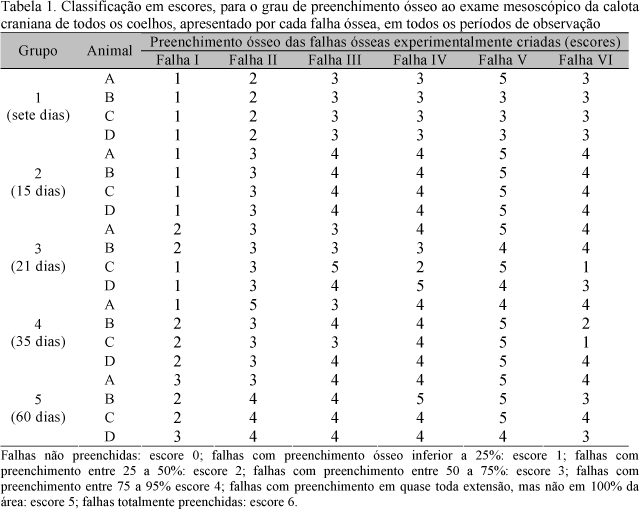Aspects of bone repair were evaluated after implantation of bone morphogenetic proteins (BMP) in different concentrations. They were carried by autogenous bone graft in defects created on skulls of 20 adult, young female rabbits, randomizedly divided into five experimental groups and were observed at five times. After exposure of skull bones, six bone defects on the fronto-parietal region of each animal were performed. The defect I was not filled, the II was completed filled with 3mg of autogenous bone graft and the defects III, IV, V, and VI were filled with autogenous bone graft associated with 0.5; 1; 2 and 5mg of BMP, respectively. In the post-mortem mesoscopic evaluations, it was observed that, independently of the treatment period of the defects, the bony filling began from the borders to the center, and from the botton to the surface of the lessions. The bony filling of the defect I was the smallest when compared with the others defects, in all the observation moments. It was also verified that until 2mg the higher the concentration of BMP used, better was the bone cover. Microscopically, it was verified in the first evaluations, on the seventh day, that the bony growth started from the borders and from the bottom of the lesion, with mobilization and differentiation of cells deriving from the periosteum and the meninges, respectively. In the subsequent evaluations, the osteoblastic activity also derived from "ossification islands" to ossification centers, located in the center of the flaw. The trabecular formation increased proportionally with the concentration of BMP used, and the apposition and bony organization increased proportionally with the time of observation. The presence of cartilaginous tissue was verified in all the flaws. In conclusion, the use the higher concentration of BMP did not determinate the better new bone formation. The association of BMP with autogenous bone graft contributed to the formation of new bony tissue, promoting larger mobilization, differentiation, and cellular organization. It also shortened the time of bony formation, suggesting an endocondral ossification process. The better quantities relation was 3mg of autogenous bone graft and 2mg of BMP. The addiction of BMP, even so in low concentration, collaborated to early formation of new bone.
rabbit; BMP; bone graft; bone repair







